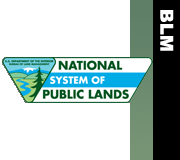|
Print Page | |||||||||||
| Fire and Aviation Directorate | ||||||||||||
The Fire and Aviation Directorate (FAD) is a diverse, professional organization dedicated to providing national direction, leadership, policy, standards, and operational oversight. FAD works with state and field offices to ensure a safe, cost effective and efficient fire and aviation management program in support of the national Bureau of Land Management (BLM) mission. The FAD is headquartered at the National Interagency Fire Center (NIFC) in Boise, Idaho, where it works with seven other federal agencies to manage wildland fire in the United States. BLM’s fire and aviation program has three organizational levels: 1) the national office provides leadership and oversight, and develops policy, procedures and budgets for the fire and aviation program; 2) state offices are responsible for coordinating policies and interagency activities within their state; and 3) field offices are responsible for on-the-ground fire management and aviation activities, often partnering with other agencies to maximize rapid initial attack. The BLM, a leader in our nation’s wildland fire management efforts, undertakes a broad range of activities to safely protect the public, the natural landscape, wildlife habitat and recreational areas for our country’s citizens. The program includes fire suppression, preparedness, predictive services, fuels management, fire planning, community assistance and protection, prevention and education, and perhaps most significant, safety. The BLM meets these challenges by fielding highly trained and skilled professional firefighters and managers. Reducing the risk and consequence of wildland fires continues to grow in importance; however, suppression operations and safety continue to be the core of the overall fire program. |
||||||||||||






